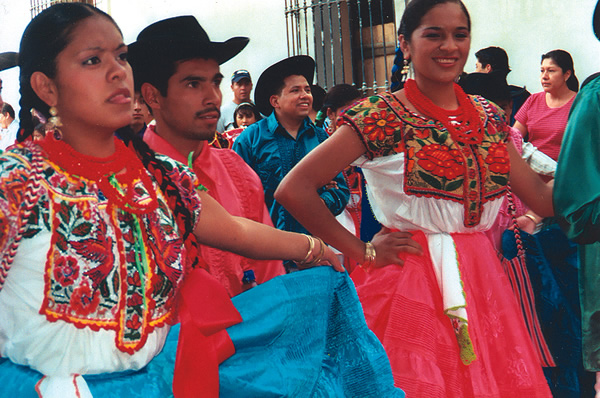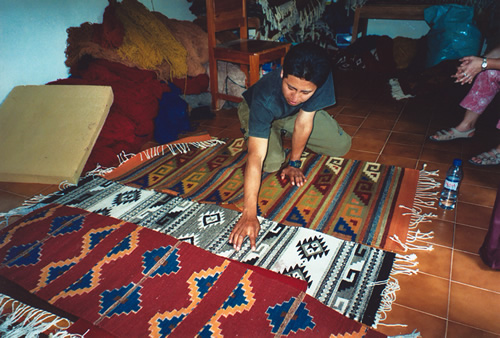Spanish Study at the Instituto Cultural Oaxaca
Perfecting Language Skills at a UNESCO World Heritage Site
Article and photos by Sarah Keyt

|
|
While studying Spanish in Oaxaca, the author had the chance to join in the festivities for the traditional Guelaguetza celebration.
|
I had been studying Spanish for three years, partly as a hobby and partly for my job; I teach English as a second language in a high school near Seattle. But for all the grammar I learned, vocabulary I memorized,
and essays I wrote, I still couldn’t speak Spanish or even identify a single word that my Latino students rolled off their tongues at rapid fire speed when they were helping me with my Spanish between classes. To learn to speak and listen,
I needed immersion in a Spanish speaking country.
A colleague of mine went to a language school in Oaxaca, Mexico several years ago and raved about her experiences so much that her 80-year-old mother couldn’t resist following her. A brief Web search confirmed
that Oaxaca was just the type of city I was looking for. It’s a UNESCO site of grand colonial buildings, the climate is tropical, there is a strong indigenous
culture, and the food is world class.
Among the schools with a website, the Instituto Cultural Oaxaca stood out. The converted hacienda with
well-tended gardens filled with exotic flowering plants looked inviting. The class schedule looked pleasantly rigorous. There were four hours of classes in the morning, 2-hour workshops in the afternoon, and an hour-long intercambio language
exchange with a local who has studied English.
The Instituto Cultural Oaxaca is large, and July is its busiest month. We passed from desk to desk in the large office, first getting name tags, next paying our tuition fee, then moving to the patio for a written
placement test, and finally moving into a classroom for the dreaded oral test. After being assigned to a level, we went back to the office to pick up our textbooks. We could spot our new classmates by matching the color of our textbooks. I
was brown: 2B, high intermediate. I was hoping to be advanced but I’d flunked the subjunctive on my written test and found myself tongue-tied during the oral interview. The last part of the morning was spent in an orientation. We learned
the essentials: how to use the phones, what to eat and not eat, and where to put toilet paper. We also signed up for workshops and an intercambio. By noon we were done and free to explore the city.
Oaxaca is known for its food. Between visits to restaurants, I continued studying Spanish. My vocabulary and understanding of grammar grew. I could talk to my intercambio for a half an hour in Spanish. The book I
was reading in Spanish became easier. I enjoyed the weekend trips led by the school to the nearby crafts villages and ruins.
Each village has a specialty. For example, the families in the small village of Teotitlán produce woolen rugs using natural dyes and hand-powered looms. The town of Arrazola produces alebrijes, wildly painted
wood-carved animals. The school trips go to specific houses where the families demonstrate the techniques and have a nice selection for sale. There are also trips to the ruins of Monte Albán, the grand city of the Zapotec people, and
Mitla, a small city and burial ground for the Mixtecs.

|
|
Intricate designs in traditional hand-made woven textiles.
|
My diligent Spanish studies came to a halt during the last two weeks of July when the Guelaguetza began. The Guelaguetza is a celebration of the dance traditions of the Indigenous people. On the last two Mondays
of July an all-day dance marathon is held in an auditorium on a hill that overlooks the city. Towns from all over the state of Oaxaca send dance troops to participate in the grand event. The city becomes very festive. Locals and tourists alike
dress up in embroidered blouses and dresses. Concerts and dances take place in the plazas. There is even a mezcal and coffee fair with local growers getting a chance to show off their products. This was the perfect end to a perfect month of
studying in Oaxaca. And my Spanish studies came in handy when I had a sudden job change from ESL teacher to Spanish teacher.
See the Instituto Cultural Oaxaca site for all course fees and dates.
Sarah Keyt has taught ESL in Japan and Slovakia.
|
